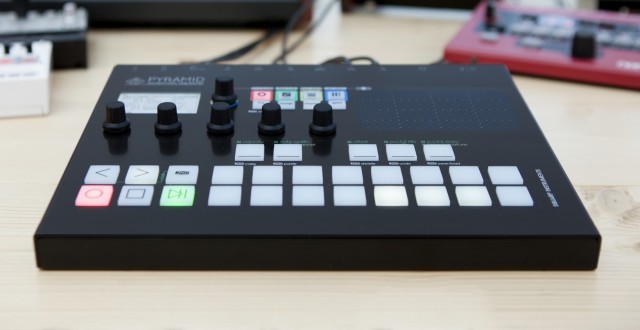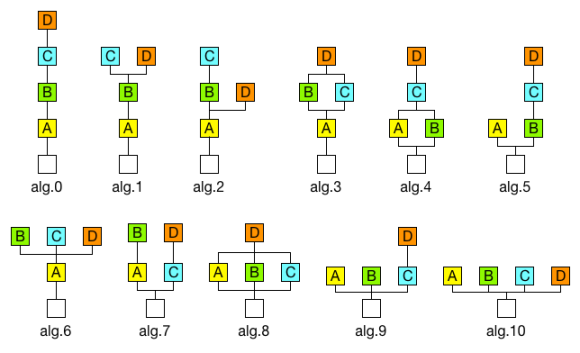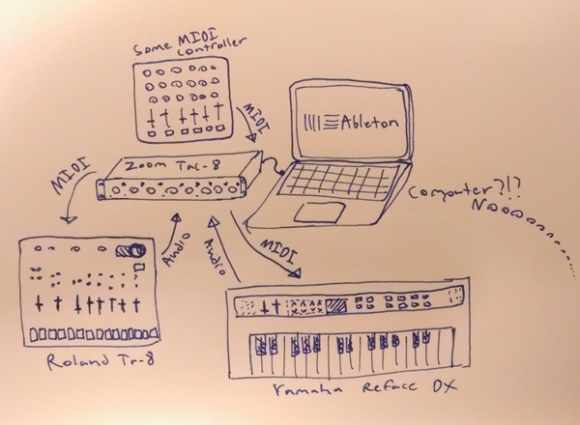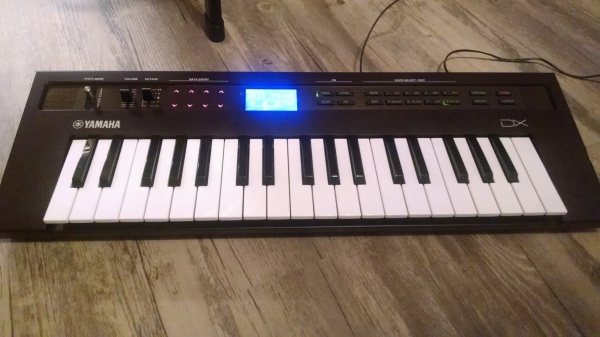Sorry for the long hiatus. Lots of things happened in the meantime, both in life and music. First, I got a new LXR and PreenFM2. On the other hand, the Roland TR8 just got sold. The money went to ordering this guy:

That’s the Squarp Pyramid, a very cool MIDI sequencer that will be the cornerstone of my rig. Soon, I’ll buy a Volca Keys for bassline duties and my basic setup will be there. My only other goals are to upgrade my cheap Yamaha MG10xu mixer and get some new studio monitors.
I probably need to explain why I chose these particular products, like why I’m getting the Vocal Keys over the Bass for basslines or why I sold my TR8 and kept the LXR, but I don’t feel like doing so right now. I’ll probably get into it later when everything is setup and running, as it’ll be more fun to actually show how everything works rather than just talk about it.
Something I do feel like talking about now is FM programming. I am pretty new to synthesis. I’ve dabbled in electronic music production for more than a decade now, but I was never any good at it. I mostly used presets, and was never that serious about learning any of the tech. Yea, I bought a few synths in the last year or so, but I still know very little about synthesis. Despite my ineptitude, I’ve taken a big liking to FM synthesis. FM programming has a notorious reputation for being a rabbit hole of clangy fucksounds. Miraculously, I’ve managed to have actual fun programming a lot of shit that sounds somewhat decent. Maybe when I’m not lazy I’ll record a couple patches and post them here.
Surprisingly, I haven’t seen that many tutorials on FM, and the ones available usually fall under two camps: 1. Study and modify the presets. 2. Here’s all the concepts of FM synthesis now go play. I found both very unhelpful. The best tutorial I found was this one:
Once you understand that. I want to show you what I do 90% of the time I start a patch. This is the FM equivalent to detuning one oscillator on a two oscillator subtractive synth. Basic as fuck, but it sounds good and gives you somewhere to go from there. In the subtractive world, the obvious path is to have the LFO modulate the cutoff and then feel like you created fire. You can do similar, basic ass shit in FM. Don’t let all the numbers, ratios, and algorithms fool you. This ain’t maths.
STEP 1: Use an algorithm with the structure of “alg.7” on this chart.

Think of this structure as a two oscillator subtractive synth. A and C are the oscillators with B modulating A, and D modulating C. You can think of the modulating frequencies B and D as separate filters or wave shaping options for A and C.
Now, what do you do what you have two oscillators?
STEP 2: Detune the oscillators.
Now, your FM synth may actually allow you to detune oscillators A and C, but we’re trying to get all FM with this and we should bring modulators B and D to the party. By adjusting B and D away from 1, like 1.3 or 0.78, it’s adding harmonics that effectively detune them. That’s why you can end up with a bunch of inharmonic, clangy nonsense if you wander too far past whole numbers. So, slightly push one modulator above or below 1. Maybe slightly push the other modulator in the other direction. Now you get some of that nice chorusing that you get in all your subtractive synths. Boom.
STEP 3: Fuck around with the ratios.
Make one oscillator into a sub by setting it an octave lower. You can set the other oscillator an octave higher. You can even set them in intervals. Now look to your modulators. You can get higher or lower harmonics depending on how high or low a number you choose. Just don’t stray too far from whole numbers and you wont get the sounds of machines turning on us.
And that’s pretty much it. That’s how I decide to start many of my patches. Of course I’ll throw in some LFO modulation here and there (usually on the volume or pitch of the modulators), and I might make different ADSR envelopes for each operator, but I tend to keep shit basic. See, FM is easy.











